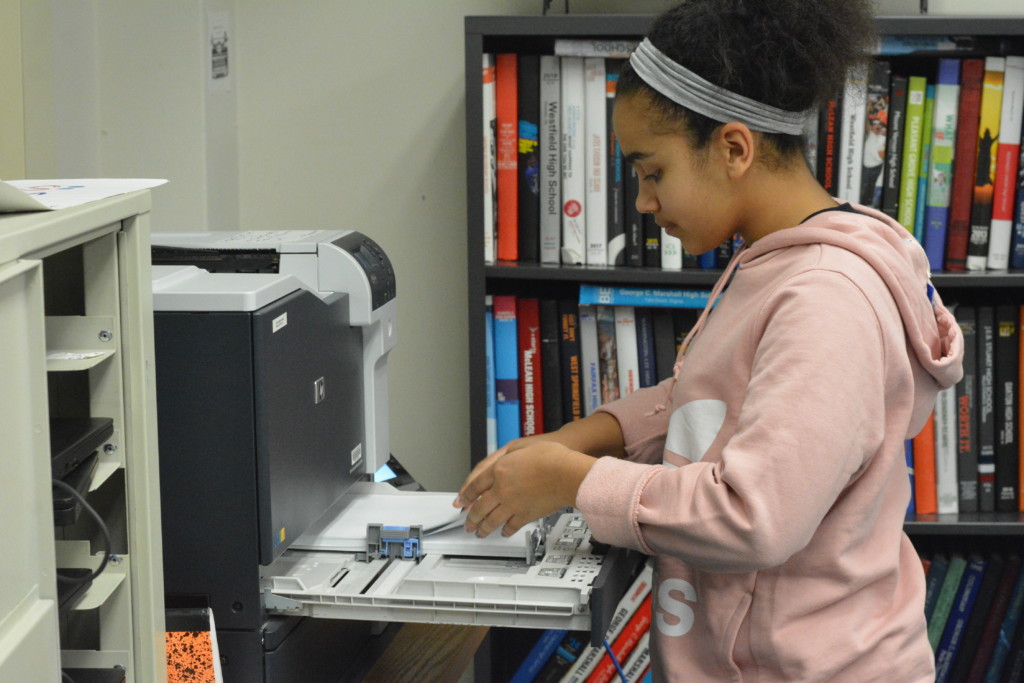Principal Jeff Litz removed and redistributed all color printers in November due to the high cost of color toner.
Litz removed six to eight color printers from teacher workrooms out of the approximately 20 in the building. Litz said he had to pay for color ink directly out of the school budget and the enormous expense of replacing color ink cartridges became difficult to justify.
“It was a cost saving measure,” Litz said. “It can cost several hundred dollars, upwards of five hundred dollars, to put ink into a colored printer. That’s a lot of money throughout a school year.”
Litz said he wants to put the saved money towards instructional programs.
“It’s important to me that when teachers want to get things for their classroom I have the money available to do that,” Litz said.
The elimination of color printers has mainly affected classes that use colorful maps and diagrams. Social studies teacher Lisa Lubick-Daniel said the lack of color printing has changed the format of tests in her Geography class.
“We use[d] color a lot,” Lubick-Daniel said. “We have awesome, [colorful] infographics that we put on tests. I’m planning on [now] giving them the black and white version [on the test] but putting the [color] version on the board so they can look at it.”
Lubick-Daniel said it would be nice for students to have infographics, but that she understands the reality of the situation.
“We liked using color,” Lubick-Daniel said. “But I also understand that it’s crazy expensive, and I think especially in the social studies department we use so much paper that it’s probably better to force us to do these things digitally.”
Junior Sydney Smith said the lack of color ink has affected aspects of the class.
“[In our] warm ups we have graphs and things and you couldn’t read [them],” Smith said. “It was a pie chart and it was just black, and everyone was [confused]. A lot of graphs are hard to read.”
Even though Litz eliminated color printers, he said those that paired with laptop carts are still available. Litz also re-allocated one of the color printers to the security team to print pictures from surveillance cameras in color. He gave the eliminated printers to other high schools.
In addition to the ones Litz decided to keep, specific classes have access to their own color printers. The photojournalism class, which makes the yearbook, has a color printer.
“We purchased the color printer using revenue from selling yearbooks,” yearbook adviser Daniel Reinish said. “We’ve also purchased paper using [that revenue].”
The photojournalism class uses the color printer to practice design skills and edit the contents of the yearbook.
“One of the curriculum goals is for students to learn the principles of design, and one of [them] is how you use color,” Reinish said. “You can’t effectively judge or assess the work on a page unless you see it at full scale in front of you, and for that you need a printout.”

